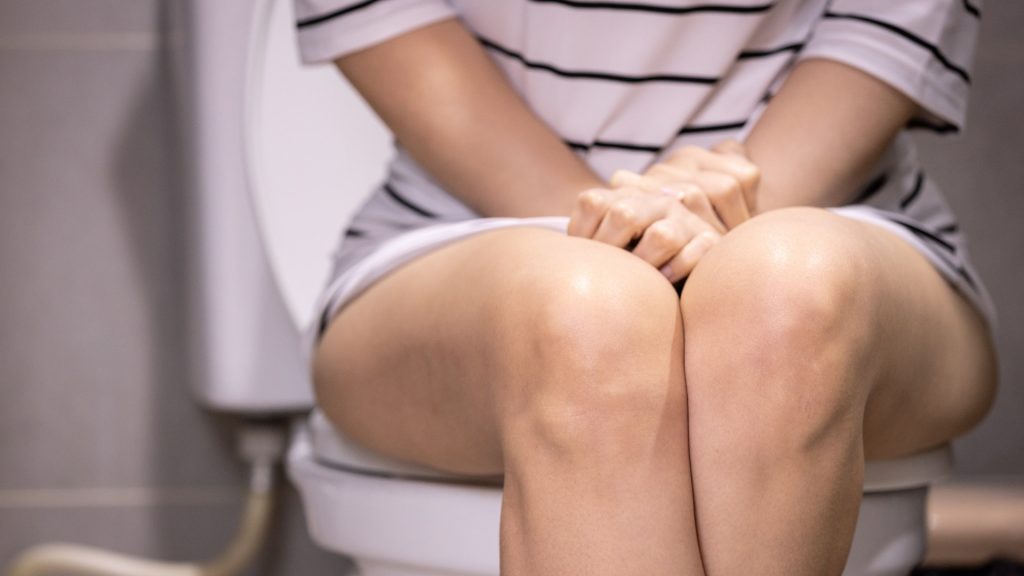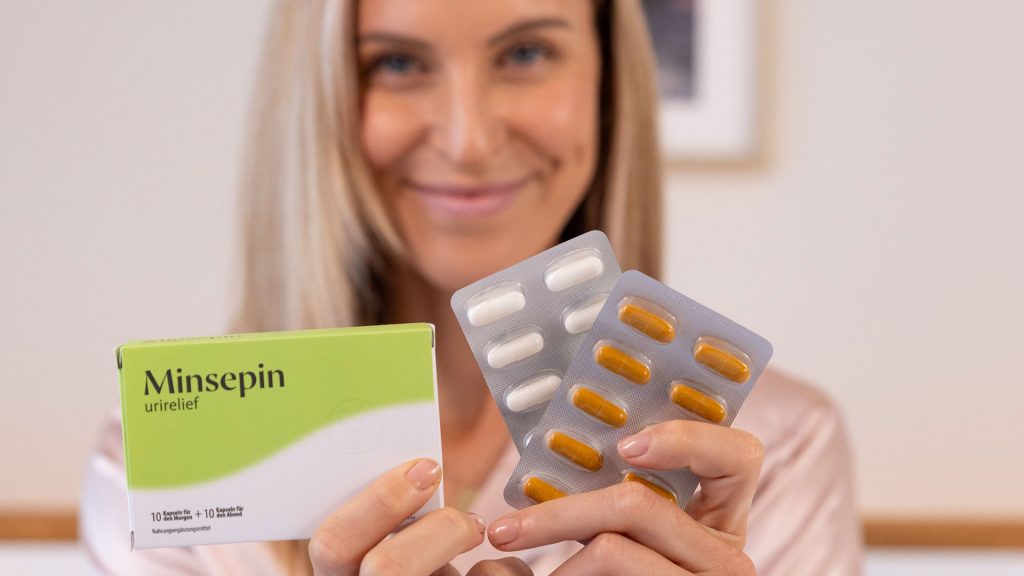Understanding urinary tract infections: guide to causes, symptoms and treatment options
- READING TIME 7 MIN
- PUBLISHED February 19, 2024
- AUTHOR Donna
Key takeaways
- Every year, over 400 million people around the world experience urinary tract infections (UTIs). Women+, especially, are more vulnerable because they have a shorter urethra and closer to the rectum.
- Recognizing symptoms such as frequent urination, burning sensation, urine changes and pelvic discomfort is the key to successfully treating UTIs.
- Treatment may include antibiotics, painkillers and certain supplements. Regular hydration is crucial, as well as maintaining hygiene to minimise the possibility of infection in the first place.
Understanding urinary tract infections: guide to causes, symptoms and treatment options
A urinary tract infection (UTI) is a relatively common condition where harmful microorganisms, mostly bacteria, invade the urinary system, made of kidneys, bladder, ureters and urethra.1 These infections can range from minor ones, typically targeting the bladder and urethra, also called cystitis2 , to more serious cases that reach the kidneys, known as pyelonephritis.3
Worldwide, more than 400 million people contract a UTI annually.4 Everyone can get it, but the elderly and women+ are especially vulnerable, the latter because they have a much shorter urethra and closer to the rectum compared to men+. Urinary infection is also not just a minor inconvenience – it causes discomfort, disrupts daily life and in rarer cases can lead to severe complications if left untreated.
Understanding the causes, symptoms and treatments is therefore essential. Let’s look at all the important information you need to manage and prevent these infections.

What causes UTIs
Urinary tract infections are usually caused by bacteria. E. coli stands out as being responsible for up to 90 percent of all infections.5 Other bacteria can also lead to UTIs, including species like Staphylococcus, Klebsiella and Enterococcus. They typically enter through your urethra and may infect the bladder. From there, the infection can sometimes travel up from the bladder through your ureters and eventually infect the kidneys.
Certain factors can increase the likelihood of developing an UTI. Most common among these are:
- Gender: Women+ are more prone to UTIs than men, primarily due to the shorter length of the female+ urethra, making it easier for bacteria to reach the bladder. Hormonal changes during pregnancy can also make you more susceptible to infection.6
- Age-related risk: Elderly people can have weakened immune systems and less efficient bladder emptying, which also makes them more prone to contracting UTIs.7
- Sexual activity: Sexual intercourse, too, can introduce bacteria into the urinary tract. Proper hygiene before and after sex, as well as urination can help reduce this risk.8
- Urinary tract abnormalities: Certain structural abnormalities in the urinary tract can slow down or obstruct the flow of urine, creating pockets where bacteria can multiply.9
- Immune system issues: Conditions that weaken the immune system, such as diabetes10 or HIV, can reduce your ability to fight off infections, including UTIs.
- Catheter use: Catheters are used in many medical procedures and can unfortunately sometimes introduce bacteria into the urinary tract. Proper catheter care is essential to minimize this risk.11
- Other factors: History of UTIs, urinary retention and kidney stones can also increase the likelihood of developing UTIs.
How to recognise the most common symptoms
A key sign of a UTI is a feeling like you need to urinate much more often than usual. This constant urge to urinate, even after you just emptied your bladder, is caused by inflammation, which makes the bladder squeeze more often.12
A burning or stinging sensation during urination is another telltale sign of an inflamed urinary tract lining.
You may also notice changes in the appearance and smell of urine. Cloudy or discolored urine may point to the presence of an infection. Foul-smelling urine can also result from bacterial growth.13
Furthermore, you might experience persistent, dull pain in the pelvic area, especially in the area of the pubic bone. This discomfort can range from mild to severe and may persist throughout the infection.14
In more severe cases, the infection may ascend from the lower urinary tract to the kidneys, resulting in a kidney infection. This can cause severe back pain, typically concentrated on one side, and a high fever.15 Kidney infections require urgent medical attention to prevent complications.

How doctors diagnose UTIs
Your doctor will begin by discussing your medical history and any symptoms you’ve been experiencing. They will also perform a physical examination to check for signs of a UTI, such as tenderness in the abdominal area.
Urinalysis is typically the first test and involves testing a sample of your urine. The urine is checked for the presence of white blood cells, red blood cells and bacteria. At the same time, urine’s color, clarity and chemical composition are also analysed.16
If further tests are needed, doctors use CT scans, cystoscopy and ultrasound to check the condition of kidneys and bladder – especially in cases of recurring UTIs. Cystoscopy is a procedure in which a flexible scope is inserted through the urethra and is used to examine the bladder’s interior.17
Treatment options
Urinary tract infections can usually be managed through a combination of medical treatment, as well as self-care practices.
A key line of defence are antibiotics. There are several types used to treat UTIs – the most common are trimethoprim-sulfamethoxazole, nitrofurantoin and ciprofloxacin. The duration of antibiotic treatment can vary, but it’s typically recommended to take them for three days if you experience uncomplicated UTIs. In more severe cases or kidney infections, treatment may extend to 10–14 days. It’s essential to complete the entire course as prescribed to prevent recurrence and antibiotic resistance – even if symptoms improve in the meantime.18, 19

Over-the-counter pain relievers, such as ibuprofen or acetaminophen, can help manage the discomfort and pain often associated with UTIs.
Crucially, don’t forget about regular hydration. Drink plenty of water and clear fluids, which is a simple yet effective way to help flush bacteria out of the urinary tract. Try to consume 1.5 to 2 litres of water daily.20
Prevention is better than cure
We can’t overstate the importance of proper hygiene in safeguarding your body against urinary infections. Women+ should wipe from front to back after using the toilet to reduce the risk of bacteria entering the urethra. Avoid using harsh soaps or douches in the genital area, as they can disrupt the natural balance of bacteria.
Proper diet and lifestyle changes can also support urinary tract health and help prevent bacterial infections. There’s some evidence that eating blueberries and cranberries, for example, could help prevent bacteria from adhering to the urinary tract lining.21 Vitamin C-rich foods such as oranges and leafy greens may also help slow down bacterial growth by making urine more acidic, as found by research in animal models.22
You can also consider taking supplements specially formulated to support the urinary tract’s physiological function. Donna’s MINSEPIN URIRELIEF, for example, includes a combination of D-mannose, common heather, silver birch and berberine.23, 24 All these substances have properties that support your urinary health and may offer relief from discomfort caused by uncomplicated UTIs.

Urinary health is worth the effort
By recognizing the signs of UTIs and seeking quick treatment if needed, while practising sound hygiene, incorporating healthy lifestyle choices and considering relevant supplements, you can significantly reduce the risk of these infections and their potential complications. Your urinary health is a crucial part of your overall well-being, and we think it’s worth the effort to keep it in great shape!
REFERENCES
- https://www.betterhealth.vic.gov.au/health/conditionsandtreatments/urinary-tract-infections-uti
- https://www.nhs.uk/conditions/cystitis/
- https://www.niddk.nih.gov/health-information/urologic-diseases/kidney-infection-pyelonephritis/definition-facts
- https://www.ncbi.nlm.nih.gov/pmc/articles/PMC9363895/
- https://www.kidney.org/sites/default/files/uti.pdf
- https://www.ncbi.nlm.nih.gov/pmc/articles/PMC8077804/
- https://www.medicalnewstoday.com/articles/322770
- https://www.healthline.com/health/uti-after-sex#_noHeaderPrefixedContent
- https://www.ncbi.nlm.nih.gov/pmc/articles/PMC2094997/
- https://www.medicalnewstoday.com/articles/diabetes-and-utis
- https://www.ncbi.nlm.nih.gov/pmc/articles/PMC8992741/
- https://www.mayoclinic.org/diseases-conditions/urinary-tract-infection/symptoms-causes/syc-20353447
- https://www.pennmedicine.org/for-patients-and-visitors/patient-information/conditions-treated-a-to-z/urinary-tract-infection
- https://stanfordhealthcare.org/medical-conditions/womens-health/urinary-tract-infection/symptoms.html
- https://www.mayoclinic.org/diseases-conditions/kidney-infection/symptoms-causes/syc-20353387
- https://my.clevelandclinic.org/health/diagnostics/17893-urinalysis
- https://www.urologyhealth.org/urology-a-z/c/cystoscopy
- https://www.mayoclinic.org/diseases-conditions/urinary-tract-infection/diagnosis-treatment/drc-20353453
- https://www.ncbi.nlm.nih.gov/pmc/articles/PMC1071654/
- https://www.medicinenet.com/can_you_flush_out_a_uti_with_water/article.htm
- https://www.ncbi.nlm.nih.gov/pmc/articles/PMC3370320/
- https://bmcmicrobiol.biomedcentral.com/articles/10.1186/s12866-023-02856-3
- https://nutritionj.biomedcentral.com/articles/10.1186/s12937-022-00769-x
- https://aliveda.com/en/the-antimicrobial-properties-of-berberine-and-its-role-in-urogenital-health/
RELATED ARTICLES
Explore more
Feed your curiosity with more content. Dive deeper and explore our selected articles, curated just for you.



